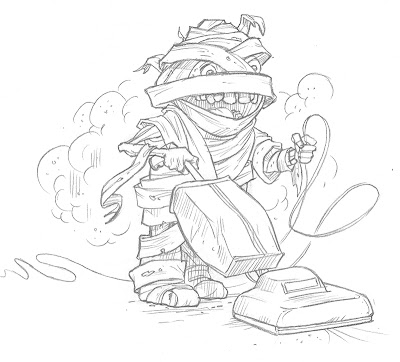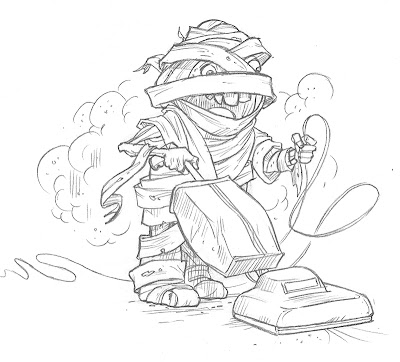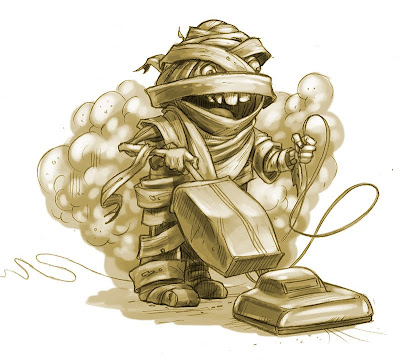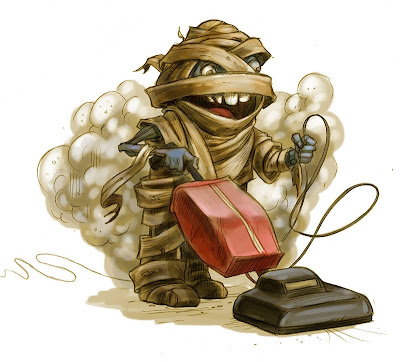 So, where does an artist's style come from?
So, where does an artist's style come from?That was the question that I, along with fellow illustrators, Susan Savory, Andy J. Smith and Teri Weidner, attempted to answer at the 25th Annual NESCBWI Conference last weekend. (For those unfamiliar with that acronym, it stands for the New England Society of Children's Book Writers and Illustrators.)
Susan, Andy, Teri and I hosted a workshop entitled - deep breath - The Search for a Singular Style: An Exploration for Illustrators. Phew. That was a mouthful.
We kicked off our presentation with slides of our work. And because we wanted to show apples and apples, each of us illustrated a scene from Three Billy Goats Gruff.
 Susan Savory's whimsical and mystical illustrations are done with cut paper.
Susan Savory's whimsical and mystical illustrations are done with cut paper. Andy J Smith's work is wacky fun and created digitally.
Andy J Smith's work is wacky fun and created digitally. Teri Weidner's watercolors are beautiful and traditional.
Teri Weidner's watercolors are beautiful and traditional. And then there's me, with my slightly twisted humor. This is a drawing with ink wash, digitally colored.
And then there's me, with my slightly twisted humor. This is a drawing with ink wash, digitally colored.The talk was essentially divided into two parts.
First, we
 discussed the roots or foundation of style and those (according to us) are Influences, Voice, Experimentation and Practice. This portion of talk featured our own personal stories and work. And for the record, the book How To Draw the Marvel Way was a huge influence on me--that and Wacky Packages!
discussed the roots or foundation of style and those (according to us) are Influences, Voice, Experimentation and Practice. This portion of talk featured our own personal stories and work. And for the record, the book How To Draw the Marvel Way was a huge influence on me--that and Wacky Packages!The second half of the talk explored elements of style, the qualities intrinsic to every illustration that can often be taken for granted. We showed several varied examples of each element of style and urged the attendees to question their approach to each of the following:
• Character Design
• Color
• Line
• Medium
• Texture
• Tight vs Loose
• Composition
As an example: when talking about color, we suggested that skies don't have to be blue (and grass green.) Sometimes just introducing less-than-expected color choices (red, turquoise, lavender skies) can shake up an artist's style and make their work stand out.
We packed a LOT into this presentation. Honestly, almost any topic covered could be expanded into its own workshop. Thanks to the great NESCBWI staff and to everyone who attended our little talk!




 "Drawing through" gives me confidence in my work -- and I hope it translates into more believable illustrations. Here's some early versions of the illustration.
"Drawing through" gives me confidence in my work -- and I hope it translates into more believable illustrations. Here's some early versions of the illustration.

















 Merry Christmas and the happiest of holidays to all!
Merry Christmas and the happiest of holidays to all!


